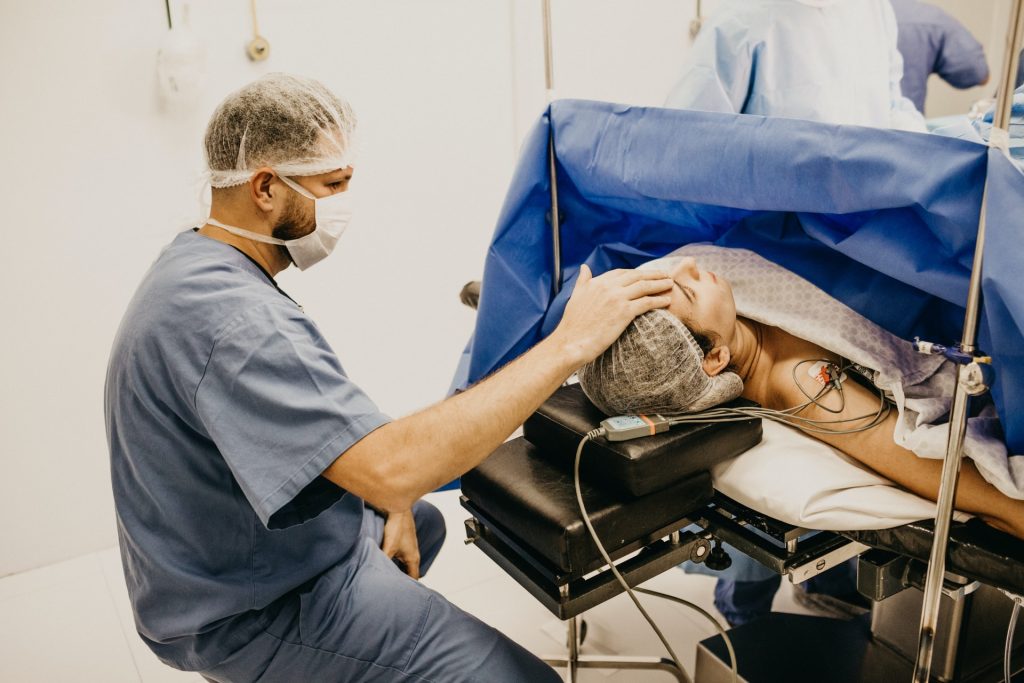
A study published in Anesthesiology finds gastric emptying is substantially slower during labour – but somewhat faster in women who receive an epidural for anaesthesia.
There is an ongoing debate as to whether it’s safe for women to eat solid food during labour. Physician anaesthesiologists prefer that labouring women have an empty stomach because of the lower risk for aspiration of food in case general anaesthesia for a caesarean section becomes necessary.
“These results suggest anaesthesiologists should remain cautious about permitting solid food during labour, especially when epidural analgesia is not used,” according to the report by Lionel Bouvet, MD, PhD, and colleagues of Hospices Civils de Lyon, France.
Researchers assessed gastric emptying rates in four groups of women: 10 who were non-pregnant, 10 who were pregnant at full term (around 39 weeks) but not in labour, 10 in labour without an epidural, and 10 in labour who received an epidural for labour pain. On an empty stomach, each woman ate a light meal of yoghurt. Ultrasound scans were then used to compare the rate of stomach emptying among the four groups.
Stomach emptying was delayed for women in labour without epidural, in line with previous studies. The rate of stomach emptying from 15 to 90 minutes after eating was 52% in non-pregnant women and 45% in pregnant women at full term, compared to 31% for labouring women who received an epidural and 7% for women in labour without an epidural.
With epidural analgesia, gastric emptying occurred much faster during labour than during labour without epidural analgesia. After 90 minutes, the stomach was empty in 3 out of 10 labouring women who received an epidural, compared to 0 of 10 women in labour who had not received an epidural. By 2 hours, the stomach was empty in 6 of the women who received an epidural, compared to just 1 woman without an epidural.
Although clinical practice varies, current guidelines of the ASA and Society for Obstetric Anesthesia and Perinatology (SOAP) state that “Solid foods should be avoided in laboring patients,” reflecting a concern over the risk of aspiration in case anesthesia and surgery are needed. This new study is one of the first to systematically compare the extent of gastric emptying delay during late pregnancy and childbirth and with versus without epidural labor analgesia.
The results confirm a “statistically and clinically significant” longer time to an empty stomach among women in labour. However for those receiving epidural analgesia, stomach emptying appears to occur faster. Based on their findings, Dr Bouvet and co-authors suggest that a light solid meal “could probably be allowed” for women in labour who are receiving epidural analgesia and considered at a low risk of caesarean section within at least the next two hours.
“The report by Dr Bouvet and colleagues enables us to rethink our current practice of fasting during childbirth,” commented Anesthesiology editor Yandong Jiang, MD., PhD. “It is desirable that women giving birth with an epidural do not have the additional stress of hunger, but instead be allowed to eat a light meal.”
This contrasts with the ASA/SOAP recommendation that women in labour should consume only clear liquids to prevent aspiration, noted Mark Zakowski, MD, FASA, chair of ASA’s Committee on Obstetric Anesthesia. “This study clearly shows that stomach emptying is quite a bit slower for women in labor, and that if they eat even a light meal of about 4 ounces [about 120g] of yogurt, many will still have food in their stomach a few hours later,” Dr Zakowski said. “Since the need for emergency caesarean may arise at any time, the current ASA/SOAP guideline of clear liquids only during labour seems justified.”


